3 High Blood Pressure
Charmaine Keena; Dennis Douglas; and Martin Borboa
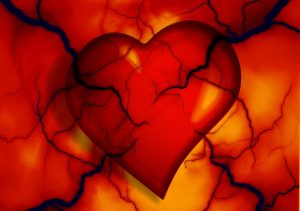 High Blood Pressure
High Blood Pressure
The Silent Killer
High blood pressure “is determined by the amount of blood your heart pumps and the amount of resistance to blood flow in your arteries. The more blood your heart pumps, and the narrower your arteries, the higher your blood pressure (will be)”. (High Blood Pressure (hypertension), 2018, May 12).
Systolic and diastolic pressure readings provide us with information regarding the arterial resistance blood flow and blood pumped by the heart.
- Systolic blood pressure readings are the number on top (numerator) and indicate the pressure exerted in the arteries when the heart contracts.
- Diastolic blood pressure readings are the second number (denominator) and inform us how much arterial resistance the heart must pump against every time it completes a contraction.
A physician uses a combination of these two readings to determine if a person is at risk for high blood pressure. Managing and monitoring your blood pressure is the best way to break the silence of this chronic disease that is estimated to affect nearly 85 million U.S adults or about one-third of the population.
High blood pressure is often known as the silent killer. The reputation of being a silent killer is due to the often-asymptomatic profiles that patients may experience. Typically, medical attention is warranted after symptoms become severe. Symptoms may include, but are not limited to, headaches, shortness of breath, or nose bleeds. These signs and symptoms are not exclusive to high blood pressure, and they usually do not occur until high blood pressure has reached a severe or life-threatening stage.
It is common for a person to go through their daily duties and not know the internal battle between blood flow, pressure, arteries, heart, and resistance. This lack of symptoms can be a substantial reason why only about 1 in 4 adults (24%) who suffer from this chronic disease have it under control. People who take this risk are tapping at the door of a host of health threats that will bring plentiful noise and daily reminders.
Health Threats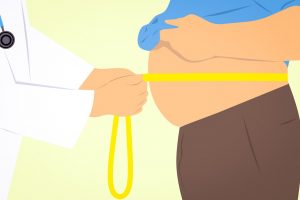
According to the Centers for Disease Control (CDC), nearly half of adults in the United States (108 million, or 45%) have hypertension (Facts About Hypertension, 2020, September 08). Some of the most common risk factors for high blood pressure are seen in people with diabetes and gout, African Americans (particularly those who live in the southeastern U.S.), the middle-aged, and the elderly. More than half of all Americans age 60 and older have high blood pressure. People with a family history of high blood pressure or those who consume a high salt diet are at risk. Additional risk factors include obesity, heavy alcohol consumption, and depression. Other factors such as smoking and the lack of physical exercise immensely contribute to high blood pressure.
Interestingly, high blood pressure tends to run in the family genes and is more likely to affect men than women. Age and race also play a role. In the United States, African Americans are twice as likely as Whites to have high blood pressure. After age 65, black women have high blood pressure (High Blood Pressure/Hypertension, n.d.).
Because high blood pressure and elevated blood pressure often have no symptoms, it is essential to regularly check your blood pressure (Manage High Blood Pressure, 2020, February 24). You can measure your blood pressure at home with a home blood pressure monitor, or you can visit your doctor or nurse to have your blood pressure checked.
What Causes High Blood Pressure?
The exact cause of high blood pressure is unknown. However, hypertension is dangerous because it hardens the arteries and can lead to heart failure, stroke, and even death.
Some known causes of high blood pressure are:
- Kidney disease
- Long-term kidney infections
- Glomerulonephritis, an inflammation of the tiny filters in the kidneys (glomeruli). The glomeruli remove excess fluid, electrolytes, and waste from your bloodstream and pass them into your urine.
Additional causes of high blood pressure are:
- Diabetes
- Lupus
- Hormone problems such as an underactive thyroid, an overactive thyroid, Cushing’s syndrome, acromegaly, and increased hormone aldosterone (hyperaldosteronism).
- Scleroderma, which is a condition that causes thickened skin, and sometimes problems with organs and blood vessels, can also contribute to high blood pressure.
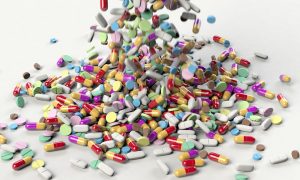 Certain medications and drugs can cause high blood pressure. Medications such as the contraceptive pill, steroids, and non-steroidal anti-inflammatory drugs (NSAIDs) – such as ibuprofen and naproxen, can raise blood pressure. Additionally, cough and cold remedies and antidepressants like venlafaxine can influence blood pressure. Recreational drugs, such as cocaine and amphetamines, also impair blood pressure.
Certain medications and drugs can cause high blood pressure. Medications such as the contraceptive pill, steroids, and non-steroidal anti-inflammatory drugs (NSAIDs) – such as ibuprofen and naproxen, can raise blood pressure. Additionally, cough and cold remedies and antidepressants like venlafaxine can influence blood pressure. Recreational drugs, such as cocaine and amphetamines, also impair blood pressure.
According to Doctor Suzanne R. Steinbaum, a member of the American Heart Association, as many as 95% of high blood pressure cases in the U.S., the underlying cause can’t be found (The Facts About High Blood Pressure, n.d.). This type of high blood pressure is called “essential hypertension.”
Management and Treatment
The National High Blood Pressure Education Program reports several options for managing and treating high blood pressure (2004, August). It includes following a special diet, lowering sodium intake, and making lifestyle changes to reduce high blood pressure risk. The recommended modifications can lower your blood pressure if it is in the elevated, Stage 1 or Stage 2 ranges. The Dietary Approaches to Stop Hypertension (DASH) diet is a heart-healthy eating plan with a proven record of helping people lower blood pressure (Dash Eating Plan, n.d.). The diet emphasizes eating fruits, vegetables, whole grains, and low-fat dairy products. Fruits and vegetables such as potatoes, spinach, and bananas, are rich in potassium, an essential mineral that helps prevent and control high blood pressure. The DASH diet is also low in saturated and total fats and sodium.
The U.S. Department of Health and Human Services (HHS) and the U.S. Department of Agriculture (USDA) recommend sodium intake for people 51+ years of age and people of any age who are black or have hypertension, diabetes, or chronic kidney disease is 1,500 mg per day. People who do not meet any of these attributes should aim for 2,300 mg per day or less (2015, December). Removing added salt from your meals is the easiest and most visible way to reduce your sodium intake. Pay special attention to the hidden salts found in processed foods such as canned soup, frozen dinners, and some beverages and dessert foods.
Did you know a half cup of the instant pudding has 350 mg of sodium, and tomato juice can contain as much as 520 mg?
That’s almost 23% of your daily intake!
(McCullough, 2020)
Being overweight or obese increases your risk for high blood pressure. Calculating body mass index (BMI) is a tool for determining whether your weight is within a healthy range. If you are overweight or obese, losing even ten pounds of body weight will lower your blood pressure. Exercise and increasing daily activity are great ways to lose weight and lower your blood pressure when combined with a healthy diet. Exercise may be intimidating at first, so start small and strive for 30 minutes of physical activity a day.
Excessive alcohol use is a modifiable risk factor that can reduce high blood pressure. Alcohol can raise your blood pressure so consume in moderation.
Alcohol in moderation means…
- Two drinks per day for men aged 65 or younger
- One drink per day for women aged 65 or younger
- One drink per day for men and women 65+ years of age (National High Blood Pressure Education Program, 2004, Table 5)
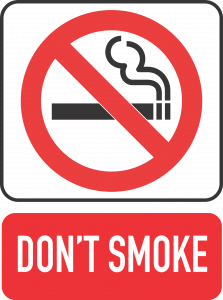 Smoking also raises your blood pressure, and tobacco damages blood vessels, which speeds up the hardening of arteries and increases high blood pressure risk. Quitting smoking will not only help lower blood pressure but will also lower the risk of heart disease.
Smoking also raises your blood pressure, and tobacco damages blood vessels, which speeds up the hardening of arteries and increases high blood pressure risk. Quitting smoking will not only help lower blood pressure but will also lower the risk of heart disease.
Reducing stress levels and obtaining an adequate amount of sleep daily is beneficial to overall health and reduce high blood pressure risk. Stress increases the release of hormones that temporarily increase blood pressure, causing the heart to beat faster and blood vessels to narrow, which may lead to damaged arteries (Stress and high blood pressure: What’s the connection? 2019). Practicing healthy coping techniques, such as deep breathing, meditation, muscle relaxation, and yoga, can help manage stress and blood pressure levels. Getting the adequate amount of restorative sleep the body needs to keep the heart and blood vessels healthy is also vital for lowering stress levels.
When dietary and lifestyle modifications do not significantly reduce high blood pressure, medication is a viable treatment option. It is common for people to take medicine to help lower blood pressure. There are several different types of medications that work differently, and sometimes more than one medication is prescribed to help lower blood pressure (Blood Pressure Medicines, 2020).
- Diuretics, or “water pills,” help the kidneys eliminate extra water, which decreases the amount of water and salt in the body and decreases blood volume.
- Other medications act as inhibitors or blockers, which relax the blood vessels or cause the heart to beat with less force.
- Some medications block nerve impulses that tighten blood vessels or control nerve impulses from the brain to relax blood vessels.
It is critical to communicate with your doctor about any side effects and take the medications as prescribed. Blood pressure medications are part of a treatment plan, and lifestyle changes may still be necessary.
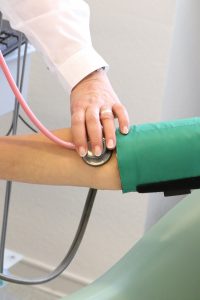 Measuring Your Blood Pressure
Measuring Your Blood Pressure
Blood pressure is measured using a blood pressure cuff wrapped around the top part of the arm with the lower end of the cuff placed about 1 inch above the elbow’s bend. The Mayo Clinic recommends, to sit down with both feet flat on the floor with the desired arm gently resting on a table that is level with the heart during the test (n.d.). The cuff inflates and squeezes the arm, and the blood flow through the artery momentarily stops. After the cuff briefly tightens around the arm, it will slowly release the cuff’s air to restore blood flow. As the cuff deflates, the blood flow and pulse are recorded. The entire process takes approximately one minute, and the results are immediate.
To understand the numbers given by a blood pressure device, one must understand the units measured in (millimeters per mercury, mm/hg) and what these numbers represent. As you recall in the introduction…
- Systolic pressure is the first number exerted in the arteries when the heart contracts and sends the blood back into the blood vessels.
- Diastolic pressure is the second number and is the arteries’ pressure between contractions, or rather when the heart relaxes.
An easy way to remember the difference between systolic and diastolic blood pressure is systolic measures when your heart beats (contracts) and diastolic measures when the heart rests in between the heartbeats (contractions).
It is normal for your blood pressure to fluctuate during the day based on your activities (High Blood Pressure Symptoms and Causes, 2020, May 19). But the more consistently your blood pressure is elevated, the more at risk you are for hypertension.
Blood Pressure Ranges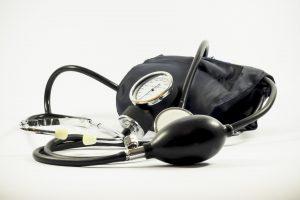
Blood pressure in the normal range will show systolic blood pressure that is less than 120 mm Hg and a diastolic blood pressure that is less than 80 mm Hg. An elevated blood pressure range will show systolic blood pressure between 120- and 129-mm Hg and diastolic blood pressure less than 80 mm Hg. Stage 1 Hypertension will appear as having a systolic blood pressure of 130–139 mm Hg or diastolic blood pressure of 80–89 mm Hg. In contrast, Stage 2 hypertension will appear when systolic blood pressure is 140 mm Hg or above, or your diastolic blood pressure is 90 mm Hg or above (Blood Pressure Test, (n.d.).
Watch Kendra Scott’s Story
Test Your Knowledge
Know Your High Blood Pressure Risk
Calculate your high blood pressure risk by utilizing the American College of Cardiology’s risk estimator. Click on Atherosclerotic Cardiovascular Disease (ASCVD) Risk Estimator.
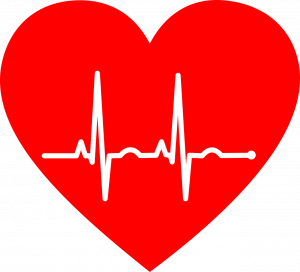 For More Information on High Blood Pressure (Hypertension)
For More Information on High Blood Pressure (Hypertension)
- American Heart Association (AHA)
- Centers for Disease Control and Prevention (CDC)
- Mayo Clinic > High Blood Pressure
- MedlinePlus > High Blood Pressure
- National Heart, Lung, and Blood Institute (NHLBI)
Media Attributions
- heart-2372134_1920 © Gerd Altmann is licensed under a Public Domain license
- obese-3011213_1280 © Mohamed Hassan is licensed under a Public Domain license
- pills-3673645_1920 © Arek Socha is licensed under a Public Domain license
- non-smoking-2558465 © Isa Karakus is licensed under a Public Domain license
- doctor-4303018_1920 © Tom Weiden is licensed under a Public Domain license
- blood-pressure-1006790_1920 © Ewa Urban is licensed under a Public Domain license
- ekg-2069872_1280 © Gordon Johnson is licensed under a Public Domain license

